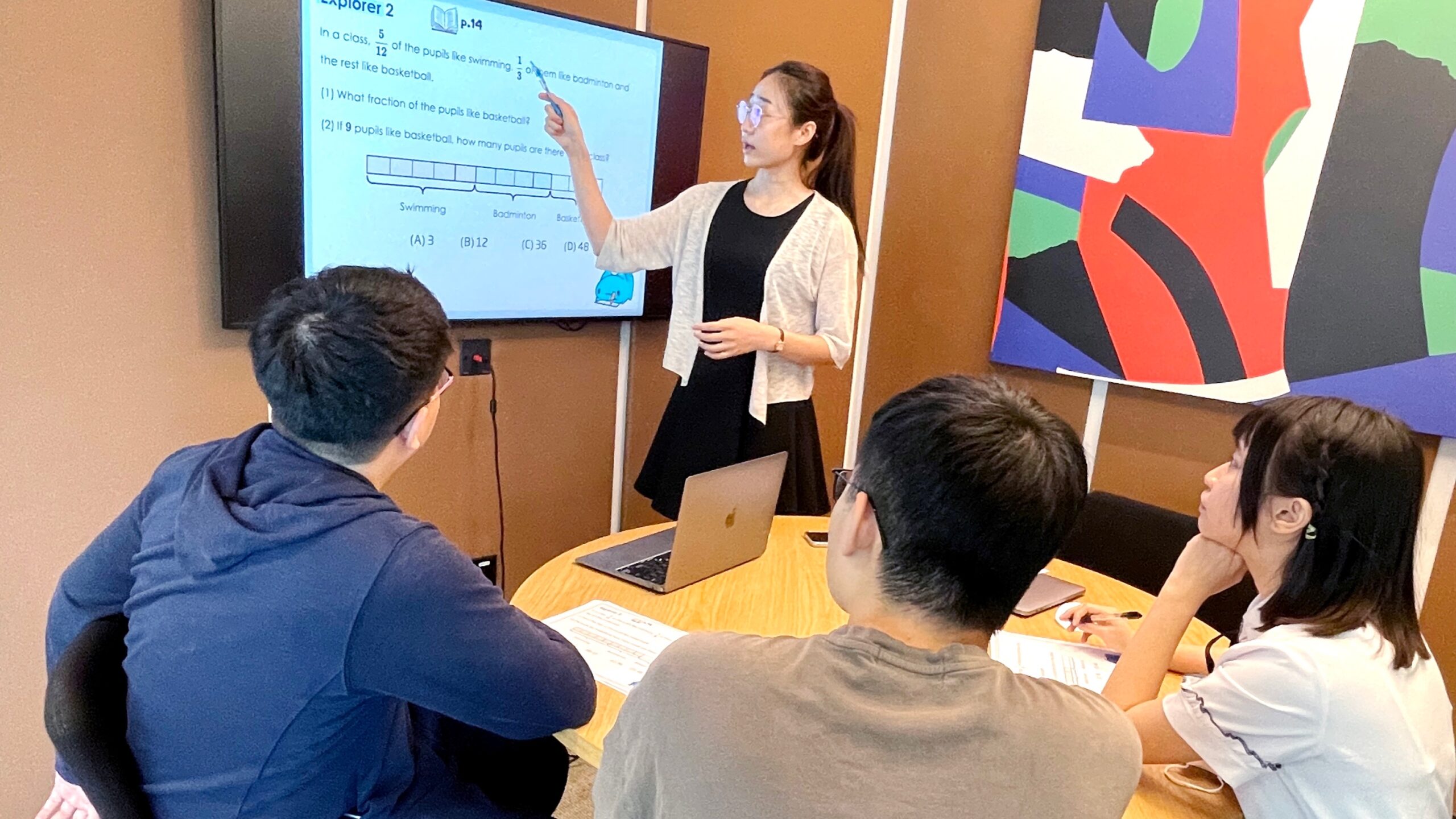A child is a single student in the class but means everything to a family.
With this motto in mind, teachers from Think Academy start their lesson preparation journey.

The teacher selection process is extremely strict: they need to be graduates from the top 20 universities in the world, who are offered various courses, training, and practical experience. The screening pass rate is only 1.5%. The teaching materials are based on the MOE syllabus, and the content is taught through customised class design.
Lesson preparation is a critical part of this equation.
If you ask a teacher how much time is needed to prepare for a high-quality class, they’ll tell you 300 hours. Time is the most valuable resource in our life and should be spent on things we value.
Now, let’s explore how our teachers prepare for a high-quality maths class.

Lesson preparation is divided into six steps, each of which embodies our core aspiration for education.
Step 1: Polishing Courseware
– If you want to do a good job, you must first sharpen your tools.
Teaching courseware serves as the field of communication between teachers and students, which defines how to express a problem, what kind of thinking it contains, and how to apply it.

During the preparation, the expert group will lead Think Academy teachers to discuss the logic lines and the best teaching methods.
Behind the teachers, there is an expert team formed by teachers with over a decade of experience in curriculum research and development; meanwhile, another strong support for the teachers is the online question bank that has more than 100,000 maths questions accumulated from around the world.
Step 2: Handwritten Lesson Plan
– Craftsmanship is the starting point of a great lesson.
The context, rhythm, and progress of a class all depend on the teaching plan, which also determines children’s knowledge intake and understanding. An excellent lesson plan must go through four phases: building, polishing, overturning, and rebuilding.
Teachers rehearse, practice explaining the questions, and bring out the value of knowledge when designing their lesson plans.

The final lesson plan is written as a verbatim draft of a class. There’s a series of practising, reviewing, and competing on giving the class, and the draft will be continuously edited and refined. A good class is thus achieved by upholding the spirit of craftsmanship.
Step 3: Lesson Preparation
– Students can tell how many times you have practised the lessons.
Teachers in Think Academy believe that “to give a child a bowl of water, you must first have a bucket of water“, so each teacher is required to practise the lesson three times before class to ensure their bucket is full. In fact, every teacher will practice more than 3 times before they step onto the “stage” and face the children.
We not only do this to practise the logic and explanations in the lesson but also to practice the expression of words and body: How can we use more concise, accessible descriptions to convey the beauty of mathematics to children? How can we set up a question session so that children are willing to stay focused and listen to the class with interest? This is the question every teacher asks themselves when preparing for lessons late at night.
The crystallization of wisdom in lesson preparation is the thick, handwritten lesson plans:

Step 4: Group Reviewing
– Pass on the excellence
After courseware preparation, repeated practice, and lesson plan writing, a course is 60% ready. At this stage, the teachers will meet again, each teacher will simulate teaching the whole lesson, and the expert group will leave comments and suggestions.

The expert group members all have more than ten years of teaching experience; they help new teachers to learn in advance which knowledge points are difficult for the children to understand, and which exercises are tricky ones. After this intense training, our teachers are ready to present wonderful, memorable classes to the children that attend Think Academy.
Step 5: Panel Discussion
– Polishing the Best Pedagogy for Children in Singapore
Teachers are placed into groups according to the grades they teach. They then discuss everything from lesson plans, handouts, knowledge outlines, curriculum systems, and key points to the practical detail of teaching like the lead-in, interactive methods, handwriting, and homework.

They work together to create the most effective, tailored curriculum as well as ensure the lessons are full of fun.
Step 6: Competition
– Leave the Best Lessons to Children
The lesson preparation in Think Academy is never about one teacher fighting alone. The best way to test results is to compete with each other. Through competition, teachers can learn excellent teaching methods from other teachers and improve themselves.
Good lesson preparation allows teachers to have a profound impact on students, which is why, in the classroom of Think Academy, you will hear feedback from parents like this:

The process of preparing a class is like sculpting jade – only by putting in a significant amount of effort can we achieve positive results.
There is a saying among the teachers of Think Academy – “Teaching poorly is like stealing money” because we always regard the growth of children as the highest goal.
That is how a maths lesson in Think Academy is created.




